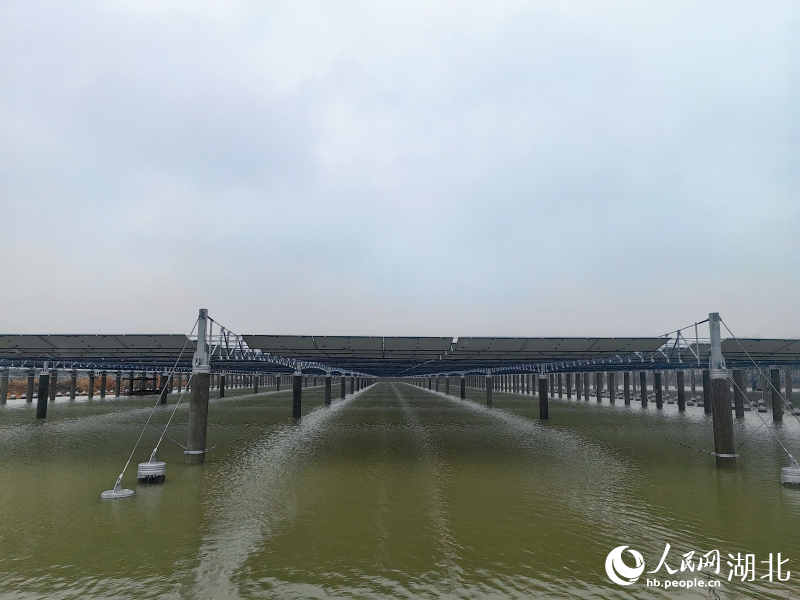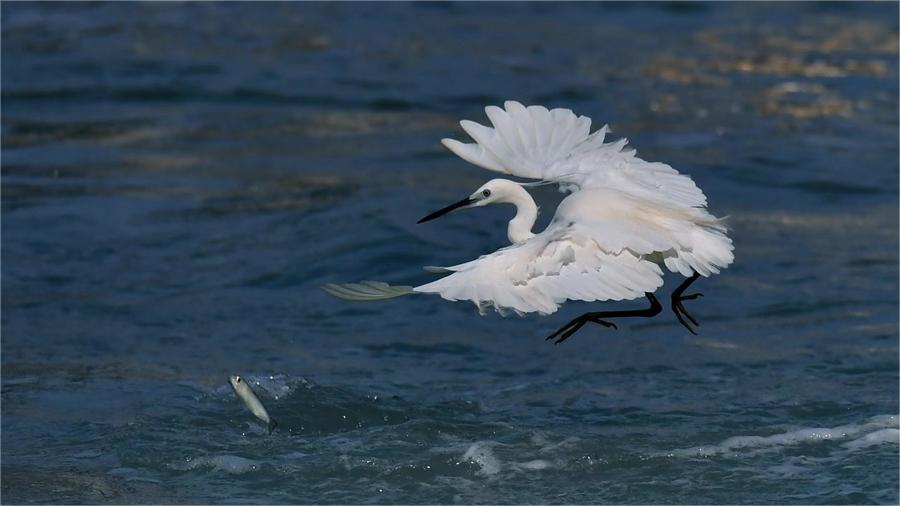Hybrid solar plant and fish farm in C China's Hubei offers environmental, economic gains

Photo depicts a fishing-solar complementary photovoltaic power generation project in Tianmen city, central China's Hubei Province. (Photo/Xiao Luxin)
Photovoltaic panels glisten in the winter sun, as fish glide gracefully beneath them in the waters of an ecological agriculture demonstration zone in Tianmen city, central China's Hubei Province. This scene exemplifies the integration of fish breeding and power generation.
"The fishing solar complementary photovoltaic power project generates nearly 600 million kilowatt-hours of electricity annually," said Liu Shenglun, head of the project.
Spanning more than 10,000 mu (666 hectares) of water, the project was connected to the grid and began generating electricity in May 2023. It is projected to generate an annual output value exceeding 240 million yuan ($33 million).

Aerial photo shows a fishing-solar complementary photovoltaic power generation project in Tianmen city, central China's Hubei Province. (Photo/Liu Yinbin)
This model merges fish farming with the placement of solar panels on the water's surface, enabling the dual operation of raising fish and producing electricity. This method makes efficient use of space and enhances the combined benefits of solar energy and aquaculture.
Liu stated the support piles, up to 40 meters in length, provide ample space for fish farming and shade during the hot seasons, creating an ideal environment for fish growth. The project's current annual fish production is 19,550 tonnes.
Furthermore, the project brings significant economic and ecological benefits. It is estimated to save 240,000 tonnes of standard coal annually, reduce carbon dioxide emissions by nearly 600,000 tonnes, and decrease soot by over 160,000 tonnes.
Photos
Related Stories
Copyright © 2024 People's Daily Online. All Rights Reserved.









